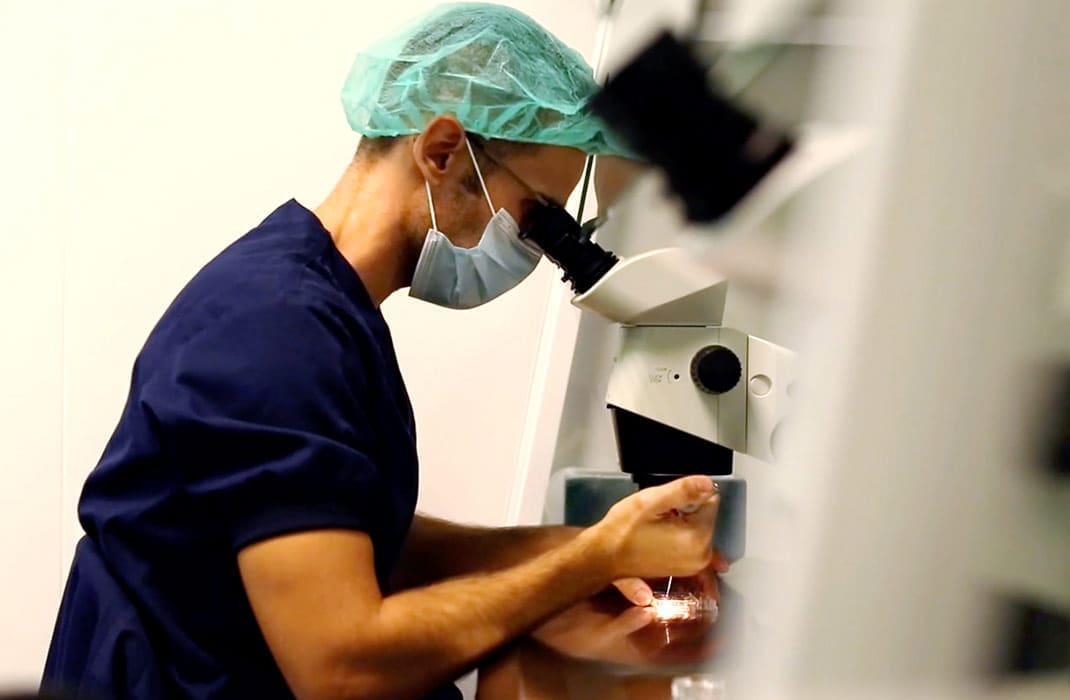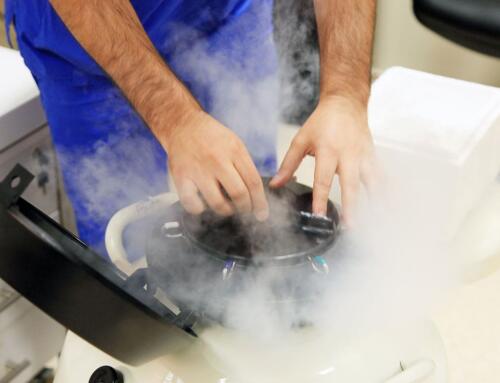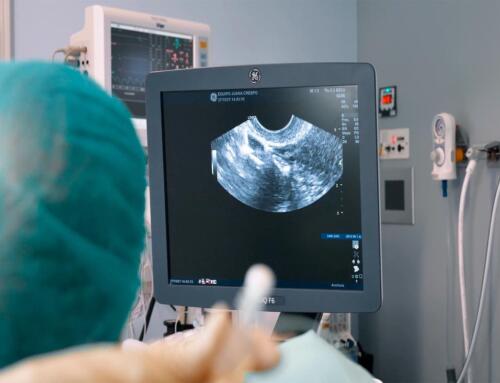A seminogram is a very common test in assisted reproduction clinics. It basically consists of analyzing a sperm sample to assess a man’s fertility.
In what cases is a seminogram done?
A seminogram is done when a couple has problems conceiving naturally. It is also performed on men who wish to verify the absence of spermatozoa after undergoing a vasectomy, sperm donors and men who want to know the status of their reproductive health.
At Equipo Juana Crespo, the most common case is the first of these. When a couple has difficulties getting pregnant, before starting any treatment, we always study the cause of the infertility. The seminogram will be a determining test for this, as it will confirm or rule out the lack of sperm or poor quality sperm as the reason (unique or not) for the failure of the pregnancy to date.
The results of the semen analysis are also fundamental in choosing the most suitable assisted reproduction treatment for a couple.
Male Infertility: Most Common Causes
About 30 million men worldwide have fertility problems, and in 20-30% of cases, conceiving issues are due to men.
Male infertility can be due to:
- Problems in the production and/or release of male hormones that regulate spermatogenesis.
- Problems in the development of sexual organs.
- Absence of spermatozoa.
- Obstructions or blockages in the seminal ducts.
- Alterations in the sperm (“seminal factor”).
- Of all the causes mentioned above, this last one (sperm alterations) is the most common reason for male infertility.
On the other hand, as with women, age affects the quality of male gametes. This is due to the sperm’s oxidation, which reduces the capacity of the semen to fertilize. In addition, damage to the genetic material contained in the sperm increases with age and can be a cause of hereditary diseases.
Other factors that worsen sperm quality are:
- Poor nutrition.
- Consumption of tobacco, alcohol or drugs.
- Intensive practice of some sports.
- Wearing clothes that are too tight.
- Exposure to toxic agents or pollutants (heavy metals, heat, chemicals, radiation, etc.).
How do we determine the quality of the spermatozoa?
For a spermatozoon to be considered of good quality, its parts must be in perfect condition. These parts are:
- Head. It has an oval shape and a size of 5-8 microns. They can be differentiated in it:
-Acrosome: it occupies two parts of the head and contains proteolytic enzymes that break down the pellucid zone of the egg, which makes it essential for fertilization.
-Nucleus: in it the chromosomes remain condensed, that is, the genetic information that the future embryo will receive.
-Plasma membrane: it surrounds the acrosome and the nucleus to separate them from the rest of the spermatozoon’s body.
- Intermediate part. It is located between the head and the tail. Its interior is formed by the mitochondria in charge of obtaining the necessary energy to produce the flagellar movement that allows the sperm to move.
- Tail. The tail or flagellum is the part of the spermatozoon that allows it to move. Any alteration in the flagellum can cause infertility in a man.
When a spermatozoa presents alterations in their mobility (Asthenozoospermia), in their morphology (Teratozoospermia) or DNA fragmentation (breaks in the nucleus), there may be problems in achieving pregnancy.
How is a seminogram done? The step-by-step process
A seminogram does not require the use of invasive methods to obtain a sample: the man should only ejaculate in a sterile container after masturbating.
A sexual abstinence of 3 to 5 days is recommended before depositing the sample. During the 8 hours prior to collecting the ejaculation, no ointments or lubricating creams should be applied to the genitals.
Previously, the patient should wash his hands and genitals with soap and rinse them with abundant water.
It is very important to collect the total amount of sperm because, if part of it is lost, the sample will not be representative.
The jar with semen should be closed and kept at a temperature between 20º C and 37º C. The sample is then taken to the laboratory immediately, and then we proceed with the macroscopic and microscopic analysis.
1. Macroscopic analysis
It allows us to verify that the degree of the spermatozoa’s mobility is optimal and that the sperm’s condition does not represent a fertility problem. The parameters analyzed are:
- Amount of sperm expelled in the ejaculation (measured in milliliters).
- The sample is left to rest for 20 minutes at room temperature. The level of liquefaction indicates the presence (or not) of a protein called fibrinolysin and possible alterations in its production.
- The presence of threads can impede the movement of the spermatozoa.
- An abnormal color may indicate an infection.
- A higher or lower pH level may be due to infections or alterations in seminal production which, in turn, may be the cause of male infertility.
2. Microscopic analysis
A microscopic analysis verifies that the quantity, concentration and quality of the sperm are optimal. The parameters analyzed are:
- Sperm concentration (per milliliter).
- Sperm motility or mobility.
- Staining is used to determine whether the immobile spermatozoa are alive or not.
- Morphology. The sperm’s shape is analyzed (shape of the head, middle piece and tail).
- Presence of leukocytes or epithelial cells by skin peeling. The elevated presence of leukocytes may indicate an infection.
When will I know the results?
The results of the seminogram take about 2-3 days.
The degree of fertility will be determined by the combination of all the above parameters, based on the reference values established by the WHO.
Sometimes, in order to obtain a more reliable diagnosis, it is necessary to perform two seminograms with a time interval of at least one month between them.
Options for treating male sterility
If the seminogram reveals abnormal values, we will perform other tests to detect the origin of the infertility. Some of these, although not all of them will be necessary in all cases, are
- Hormonal blood tests
- Karyotype study
- Study of DNA fragmentation
- Sperm culture
- Testicular biopsy
The alternatives we will use to treat male infertility will always depend on the cause of the sterility and its severity. In some cases, we will carry out a pharmacological treatment (for example, when there are hormonal problems that make spermatogenesis difficult, and when infertility is associated with an infection, antibiotics can solve the problem) or surgical treatment.
In the urology unit specialized in infertility and male health of Equipo Juana Crespo we treat all possible prostate, urinary and hormonal pathologies that may compromise the man’s fertility. All of this, thanks to advanced techniques such as MACS sperm selection, testicular biopsy, IVF with ICSI (intracytoplasmic sperm injection) or sperm extraction by testicular aspiration (TESE).
Detecting the origin of male infertility is essential to design a personalized treatment for the patient, and the seminogram has a fundamental role in this process. At Equipo Juana Crespo we apply the most pioneering techniques to select the optimal spermatozoa free of genetic anomalies. Do you want to know more about your fertility? Get in touch with us!
















